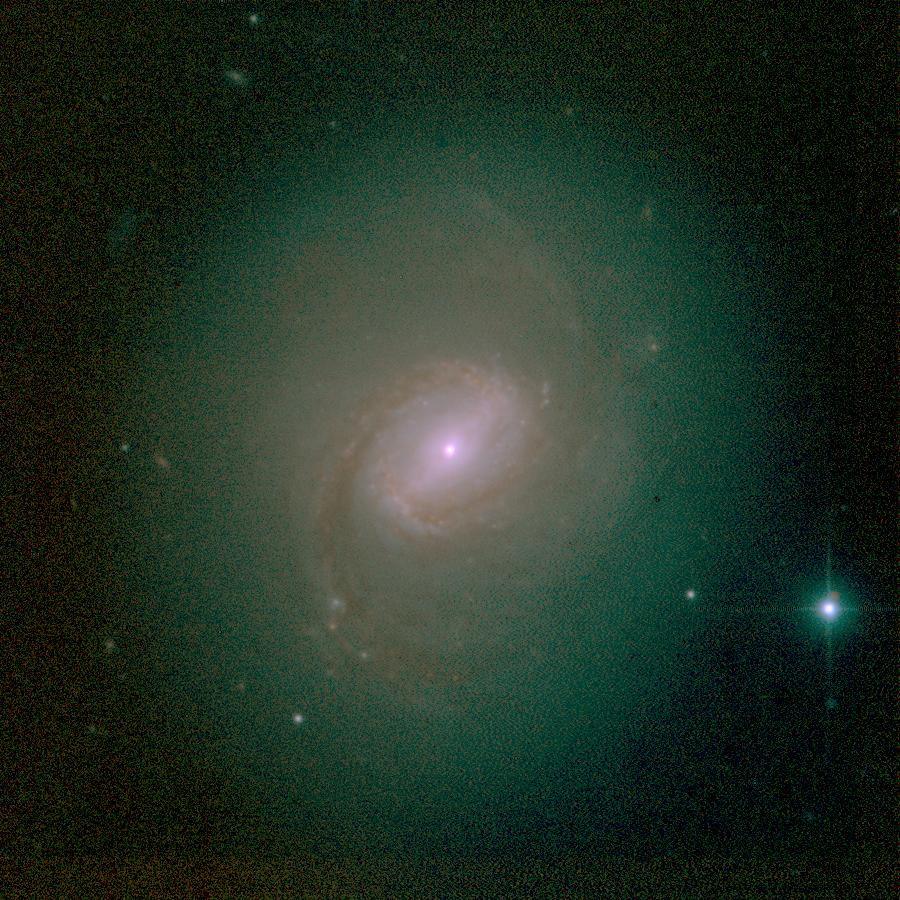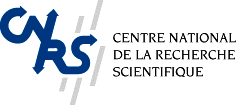
NGC 1068: The Monster next to us!
Credit: Image courtesy of Olivier Lai
CFHT

This magnificent spiral galaxy, known as NGC 1068 or Messier
77, is located some 60 million light years away from us. This galaxy
is also an active galaxy, which mean that there is likely a
black hole at its center. It belongs to a class of objects called
Seyfert II galaxies. It is the closest Seyfert
Galaxy to us.
The proximity is this spectacular spiral galaxy allows us to study its
central parts in greater details than any other of this
class. Extensive research work was done to understand this peculair
object. It has been found that the "object", the "thing" located at
its center had to be extremely massive and compact to at least 10
million solar masses located inside less than 10 light years or so,
hence the nickname "monster" for the central object. With such
properties, you guessed it, the central object is likely to be a
"black hole".
In the disk of NGC 1068 surrounding the central active nucleus,
intense star formation activity has also been found. Some of these
star forming regions are visible in the image shown here as little
bright "blueish dots" located along the inner spiral arms of the
galaxy. They appear bright as they emit more than their immediate
surroundings in an emission-line of ionised Hydrogen called Brackett
Gamma. In this case, images in the Brackett line was obtained by using
a narrow-band filter center on the proper wavelength, at 2.16 microns.
This emission line traces ionised hydrogen emission typical of intense
star forming regions. These star formation regions are among the
brightest known, and perhaps the most luminous within a distance of
100 million light years from us.
This is the thris week where an image from the new infrared camera
available at CFHT, CFHT-IR, is featured. Once again, this is a
color-composite image. the true orientation of the object is
conserved, with North up and East to the left. The final image was
obtained by combining three images taken in the broadband filters
covering the I- and K-bands, at 800nm and 2200nm respectively. A third
image was obtained in a narrow filter centered on the Brackett Gamma
line of ionised Hydrogen, at 2.166 microns. This emission is a good
tracer, in the infrared, of star formation activity.
CFHT-IR, similarly to KIR, is
based on a Rockwell 1024 X 1024 HAWAII chip. Its full field of view is 3.6 X 3.6
arcminutes. CFHT-IR can operate from 0.8microns to 2.5microns. It can also
be fitted behind the
OSIS spectrograph to provide near-infrared
multi-object spectroscopic capabilities in the 1.1 to 1.8 micron window.
A complete description of CFHT-IR can be found on this web
site.
Technical description:



